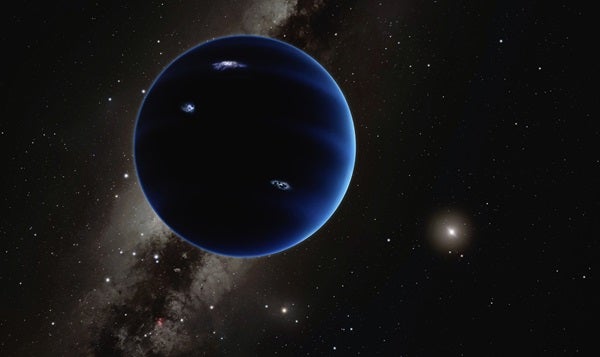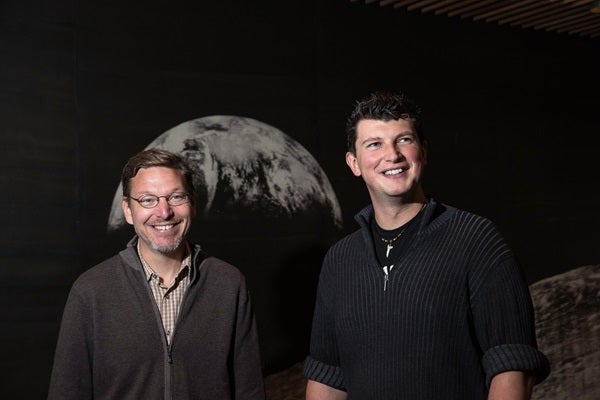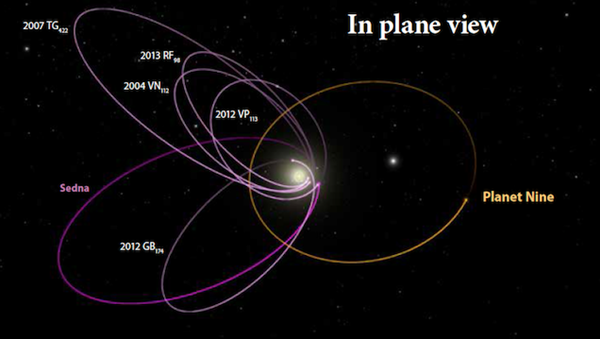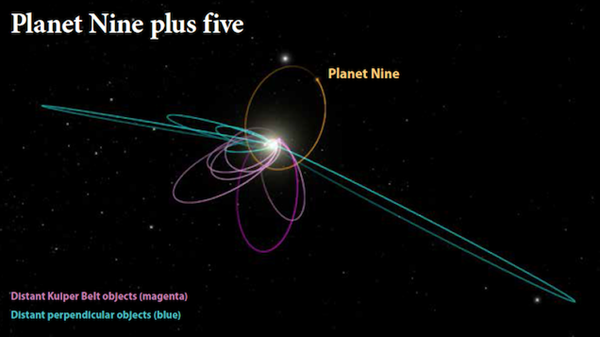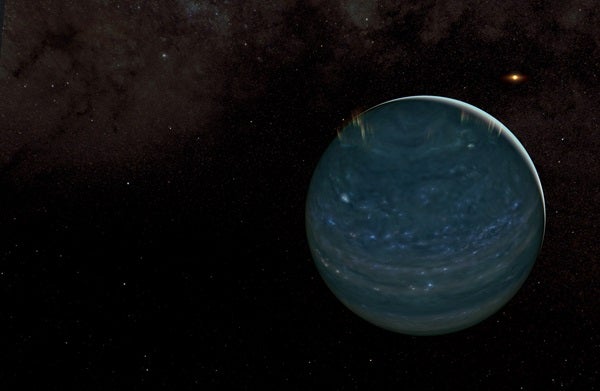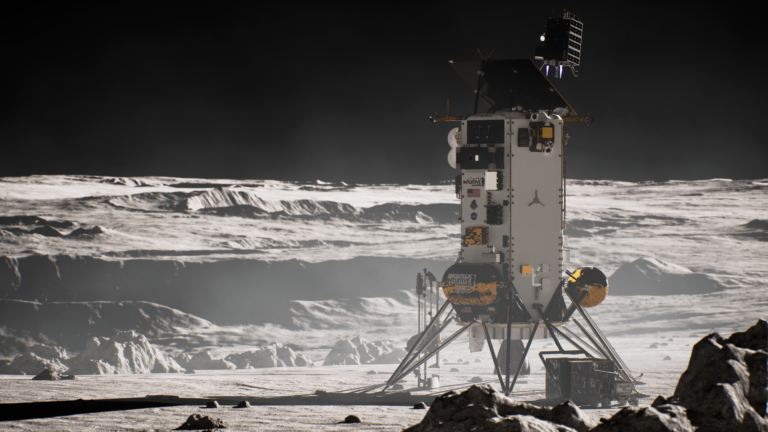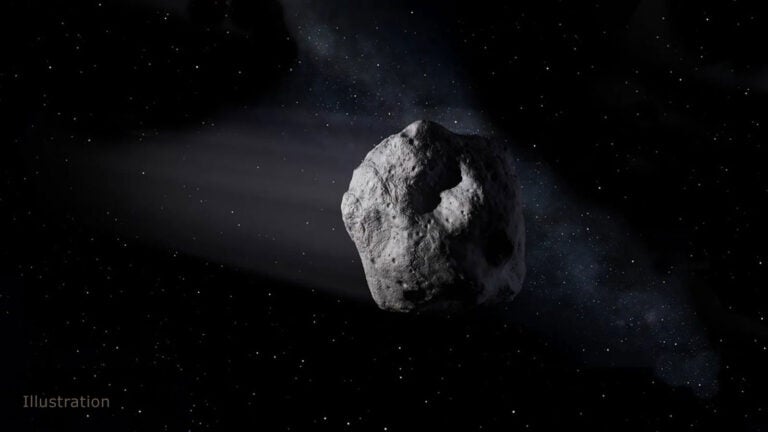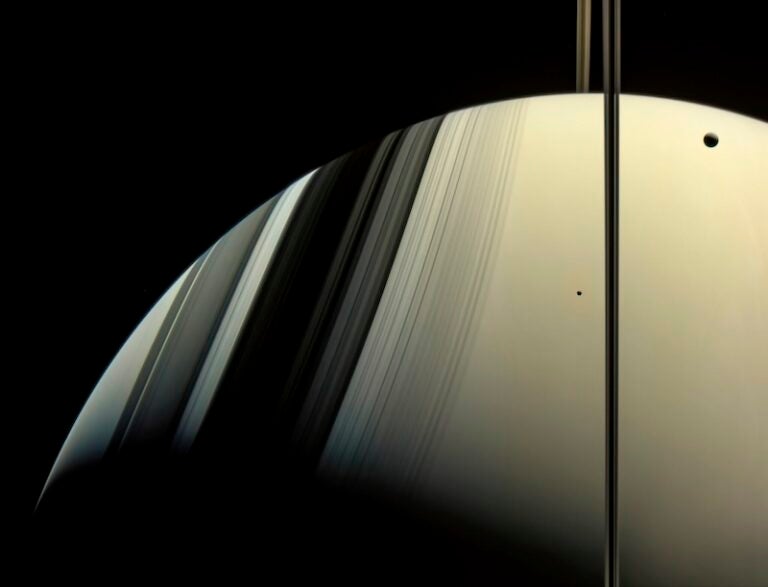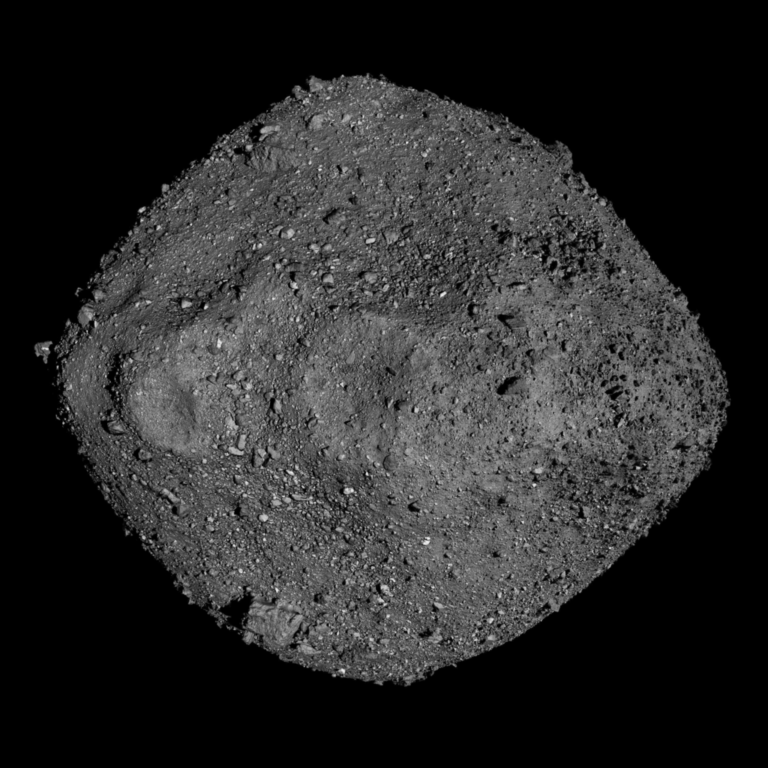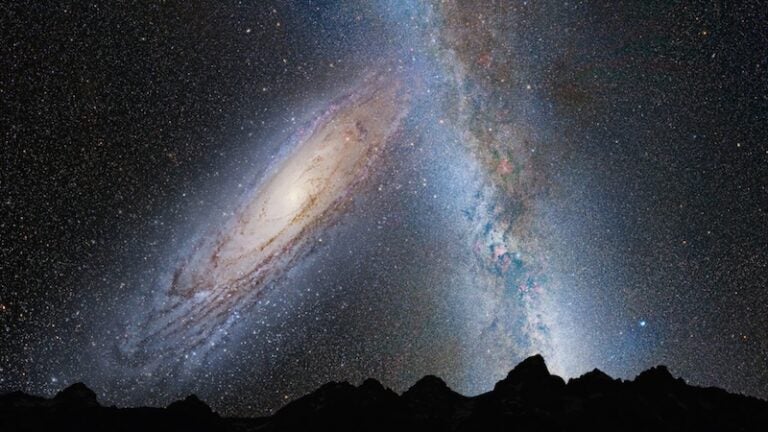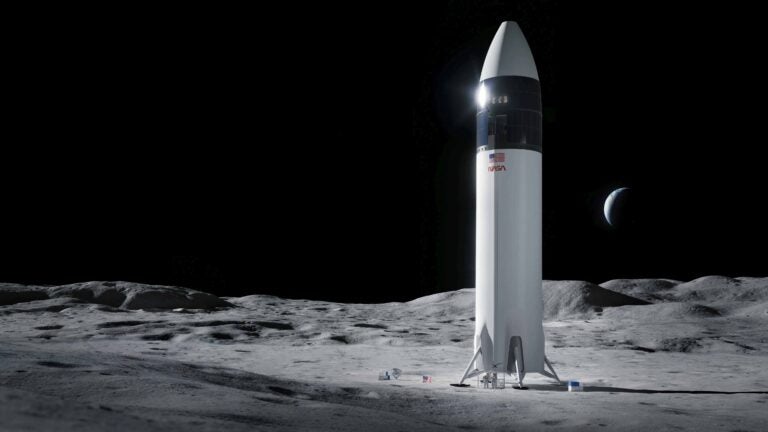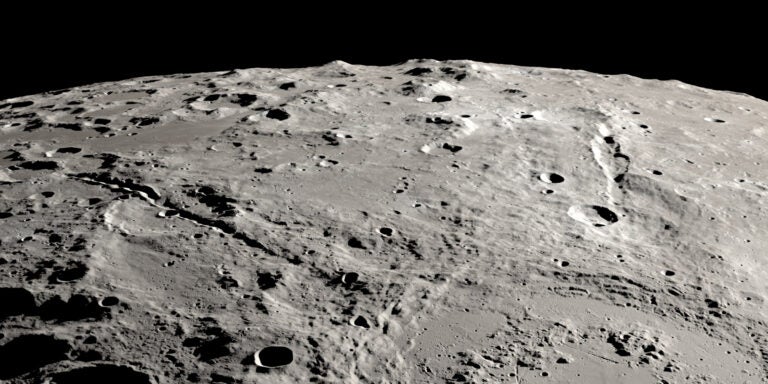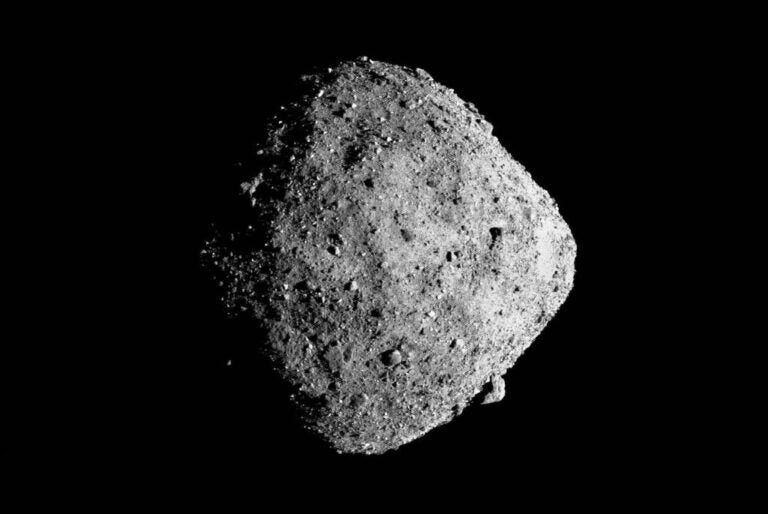By 1910, many astronomers had made conflicting predictions for a ninth planet, and Edward C. Pickering and Percival Lowell separately led unsuccessful searches for what was variously called Planet O, Planet P, or Planet X. The predictions and searches for a giant planet beyond Neptune continued all the way until 1993, when Jet Propulsion Laboratory scientist Myles Standish published an update on the expected positions of everything in the solar system using the latest data obtained from careful measurements of the position of the Voyager spacecraft. Standish showed conclusively that all the planets were exactly where they were supposed to be. More than a century of searching for Planet X had been in vain. Nothing was out there.
But that wasn’t really the case. At nearly the exact moment that Planet X was being put to rest, astronomers found the first new object beyond Neptune since the accidental discovery of Pluto (during a search for Planet X). As discoveries mounted, planetary scientists quickly realized that this population of objects in what we now call the Kuiper Belt is vast. To many of us who had begun to study this newest known collection of objects in the solar system, another thing became obvious: There was no chance that Pluto was going to be the only large object in the Kuiper Belt.
By 1998, I began a large-scale survey of the sky from Palomar Observatory with the clear goal of detecting these largest objects, but also with the hope that perhaps — just perhaps — there was something new and big still to be found in whatever the next region was beyond the Kuiper Belt.
Sedna was the first good clue, but it was not the first actual clue. Three years earlier, one of the first large Kuiper Belt surveys detected an object called 2000 CR105. This object’s orbit, too, is distant and elongated and appears to have been pulled — or pushed — away from Neptune, though only by a small amount. It was such a small amount, in fact, that some astronomers argued that the mildly unusual orbit was caused simply by long-term interactions with Neptune. Nonetheless, Brett Gladman, now at the University of British Columbia, suggested that perhaps 2000 CR105 had been pulled away from Neptune by an approximately Mars-sized planet on the fringes of the Kuiper Belt. Interestingly, in what was thought to be a simple coincidence until just this year, 2000 CR105 and Sedna were both being pulled in the same direction.
In the 15 years since these early discoveries, thousands of new objects have been discovered in the Kuiper Belt, including two with elongated orbits that appear to have had their perihelia, their closest approach to the Sun, pulled slightly away from the Kuiper Belt. Coincidentally — or not — both of these were tugged in the same direction as 2000 CR105 and Sedna.
The six most distant objects in the solar system with orbits beyond Neptune (shown in magenta) all mysteriously align in one direction. When viewed in three dimensions, they all tilt nearly identically away from the plane of the solar system. According to the Caltech astronomers, this is evidence for Planet Nine’s existence.
In a seemingly unrelated analysis, Rodney Gomes in Brazil noticed the existence of an unusually large number of objects with distant orbits whose closest approach to the Sun had been pushed inward even closer than the orbit of Saturn and whose orbits were twisted such that they were nearly perpendicular to the disk of the solar system.
No one really had any viable suggestion for the origin of these peculiar objects. But Gomes had an interesting hypothesis: Perhaps a distant, massive planet was twisting these orbits perpendicularly and pushing their closest approaches inward.
A predicted outcome of Planet Nine’s existence is that a second set of confined objects should exist. They are forced into positions at right angles to Planet Nine and into orbits perpendicular to the solar system. Five known objects fit this modeling perfectly (shown in blue-green).
Moreover, it would pull the perihelia of these Kuiper Belt objects away from the Kuiper Belt. And, in a result we did not expect, it would alter these elongated orbits, twisting them to be perpendicular to the plane of the planets and driving their perihelia inside of Saturn’s orbit. We didn’t know off the tops of our heads if any such strange orbits existed because, embarrassingly, we had overlooked Gomes’ paper, which had come out just as we were in the intensive last phases of our analysis. But when we saw the objects pointed out by Gomes, we grew excited. Our planet theory not only predicts objects like that, but it also predicts exactly how those orbits should be aligned. We quickly plotted the locations of these distant, twisted orbits, and, to our astonishment, the orbits were precisely where we predicted them to be.
For us, this moment marked moving from working on an interesting hypothesis about some unusual orbital alignments to instantly realizing that we were talking about something that was really out there. This was something waiting to be found, something that both explained the old observations we were working on and also crystallized correct predictions about things we were completely unaware of. We like to think of this as the day that Planet Nine was born.
Instead, though, we have only a snapshot of the orbits of a variety of different objects, and we must infer what should have happened in the past. In practical terms, that means that although we know the orbital path of Planet Nine through the sky, we don’t know where it is in its orbit. We no longer have to search the entire sky to find Planet Nine, but there’s still a lot of work to do.
The search will not be as hard as it might have been, however, as many sky surveys over the past few years have covered large swaths of the sky and might have detected Planet Nine had it been in their region. We know, for example, that when Planet Nine is at its perihelion, it is as bright as 18th magnitude, lying in the southern sky near the constellation Ophiuchus. Such an object would have been detected years earlier. Most likely, Planet Nine is now closer to its aphelion, where it would glow dimly, likely close to 25th magnitude.
While that is very faint, detecting such an object is well within the capabilities of the 8-meter Subaru Telescope on Mauna Kea and its impressive Hyper Suprime-Cam, a mosaic of 112 CCD cameras covering nearly two square degrees of sky with every exposure. We have already begun our search using this telescope. Other astronomers are likely to follow.
Is Planet Nine really out there? It’s always wise to be skeptical, but still, we are quite convinced that the answer is yes. Something must be responsible for all the unusual orbits that we now see in the outer solar system. Planet Nine is by far the most likely explanation.
So if it is really out there, when will we find it? The world has been alerted, and multiple teams are on the hunt. Perhaps during the next five years, someone, at some telescope somewhere, will spot a faint blip in the sky that moves to a slightly different spot the next night. When they first see it, they will gasp. Then they’ll recheck all the data and gasp again. They’ll scramble to beg and borrow a few hours on big telescopes here and there to confirm the blip’s slow march across the sky. Finally, after checking and double checking and checking 10 more times, they’ll make a dramatic announcement to a now-anticipating world: Planet Nine is found; Planet Nine is real!

